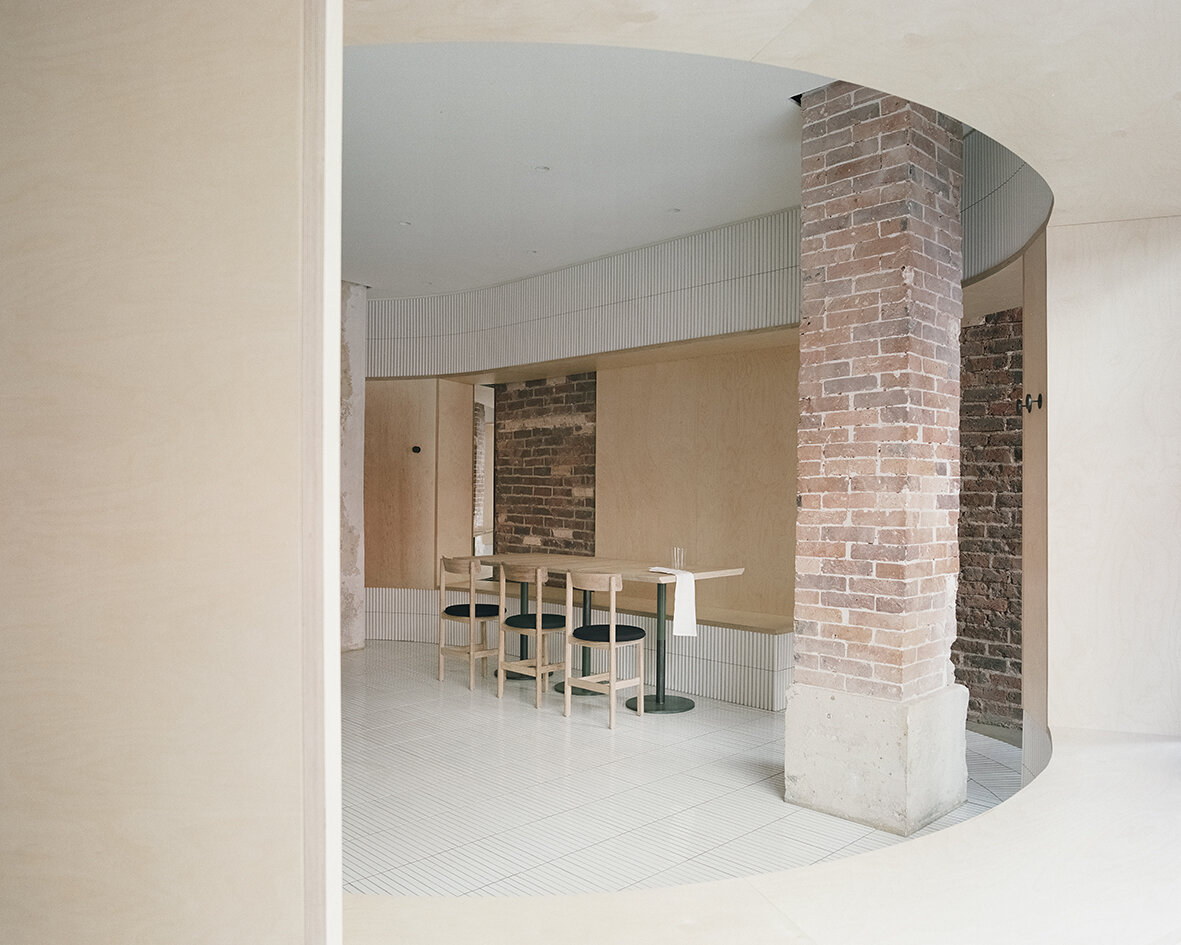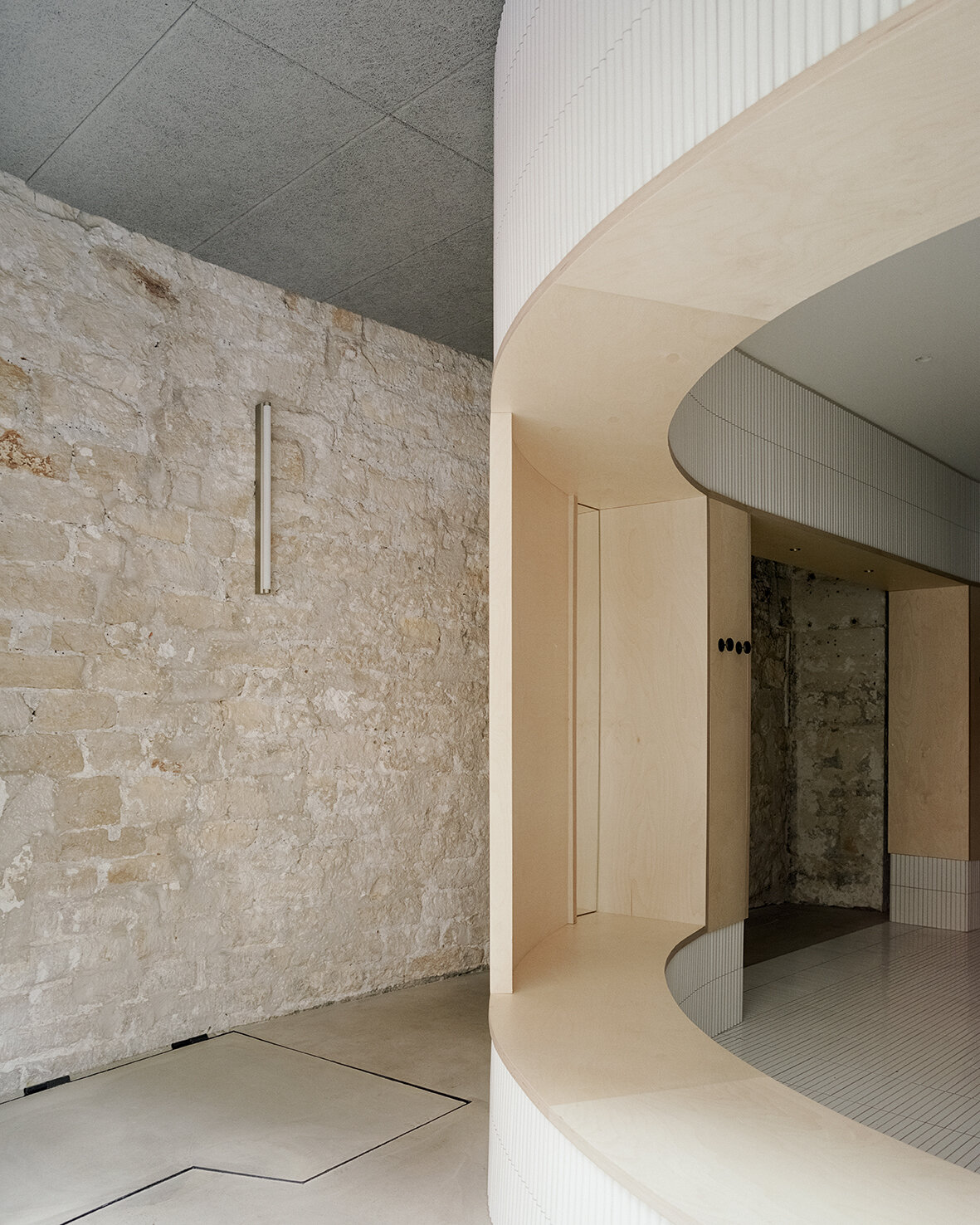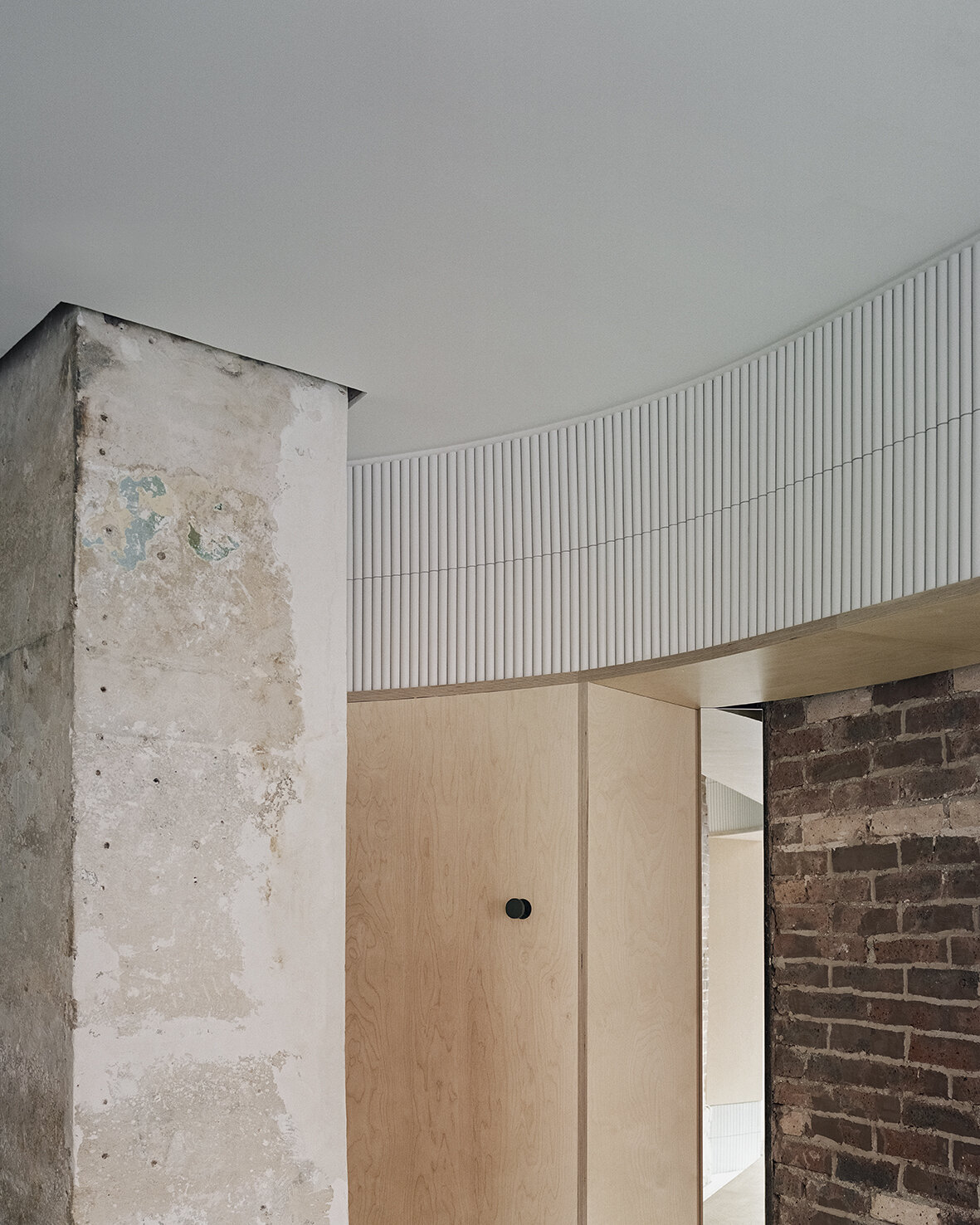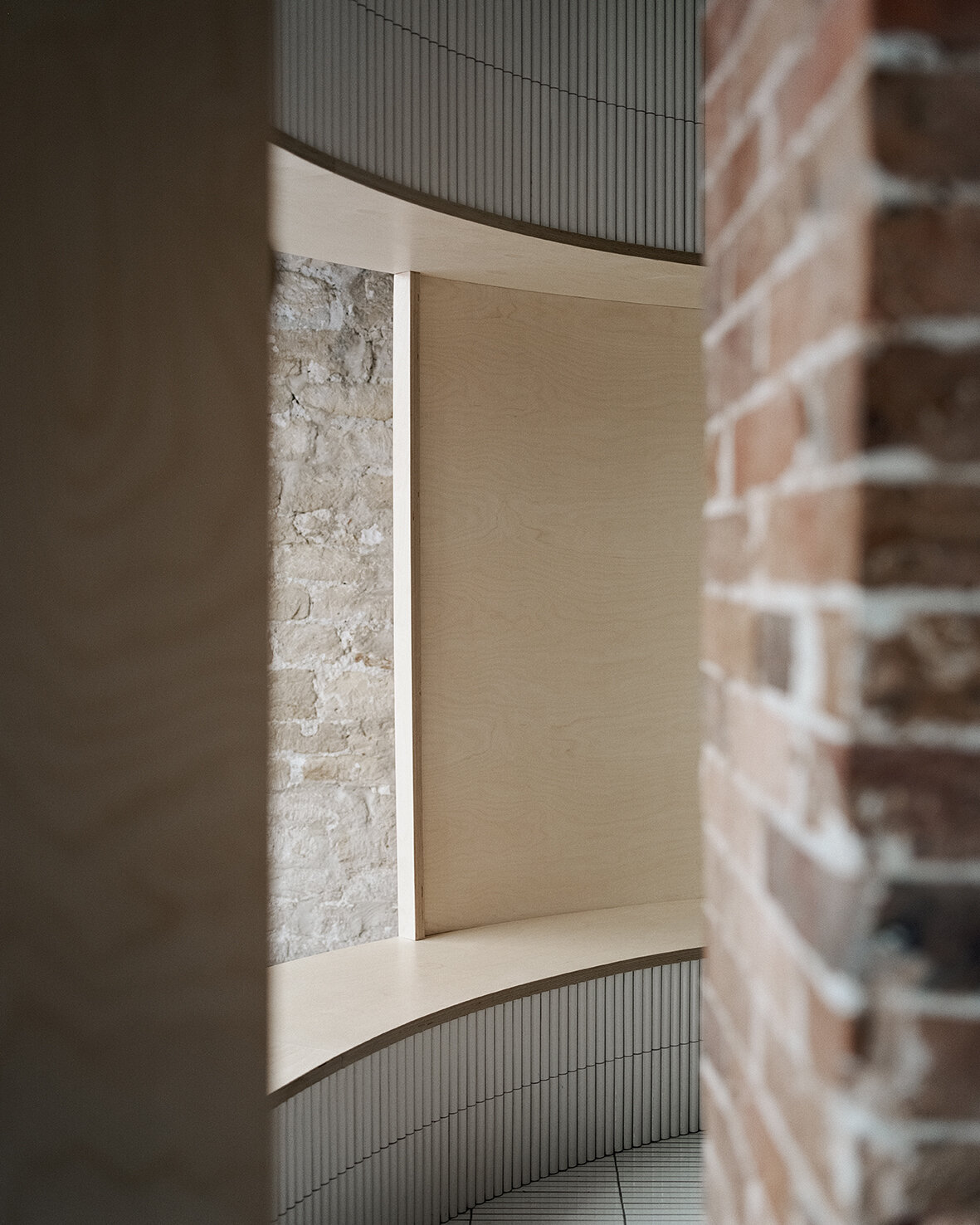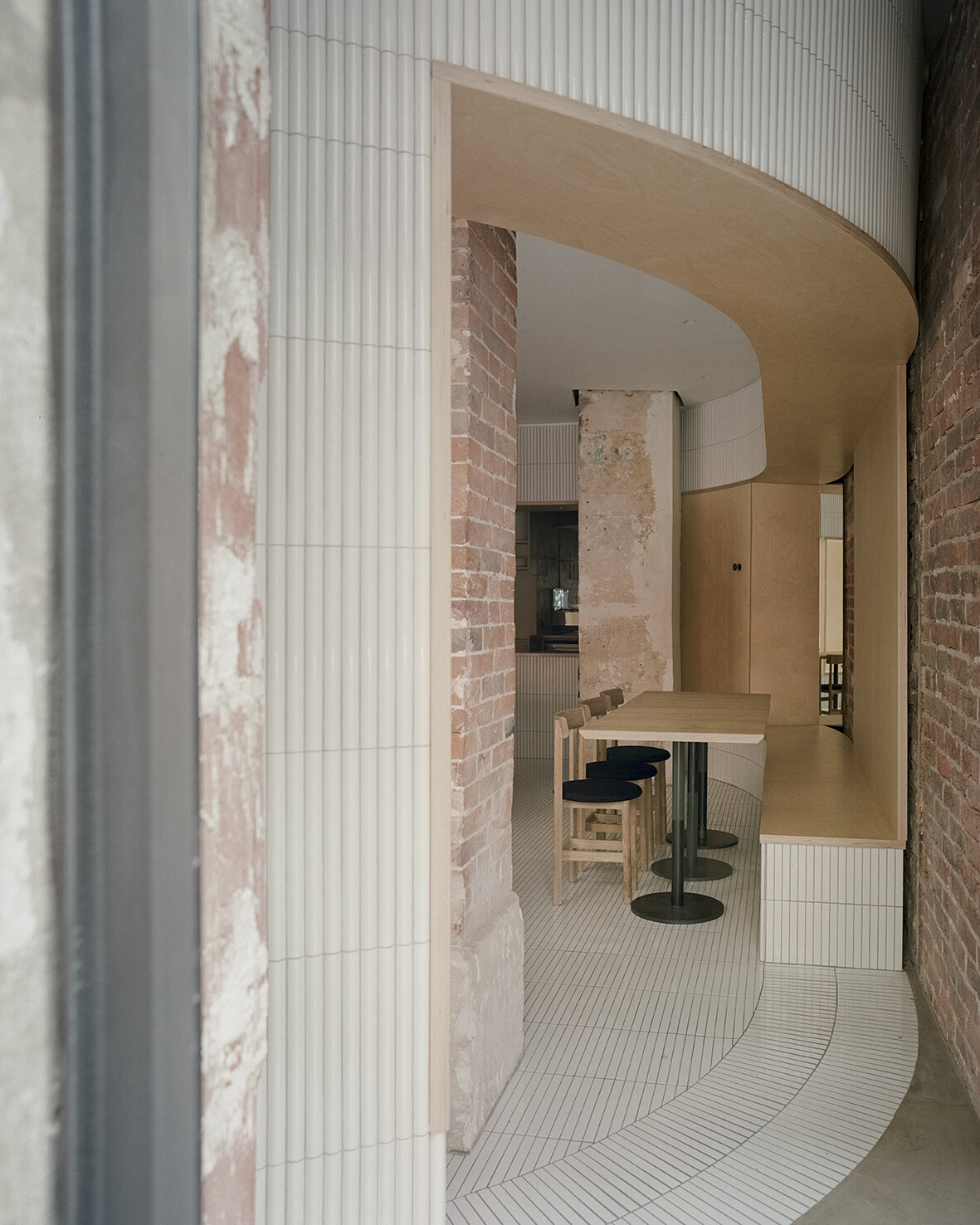The whimsical curves on the Loïe suspension
To celebrate their 10th anniversary, the leading Parisian design studio MYDRIAZ unveils a capsule collection that combines oneiric elegance with a contemporary twist.
To celebrate their 10th anniversary, the leading Parisian design studio MYDRIAZ unveils a capsule collection that combines oneiric elegance with a contemporary twist. With the introduction of the first new indulgence product range, MYDRIAZ is broadening its audience. The Loïe suspension is the first piece of this coveted collection made exclusively in MYDRIAZ’s workshop in Paris.
Striving to combine artistic and artisanal disciplines, this new series celebrates MYDRIAZ’s co-founders and designers, Jennifer Midoz and Malo du Bouëtiez.
The new Loïe suspension encompasses traditional metalwork with contemporary techniques. Its shape was inspired by the light and airy Serpentine dance movements pioneered by American artist Loïe Fuller. The shimmering of the delicate fabric and the floaty allure of the moving material on the dancer’s costumes is reimagined onto the brass structure of the light.
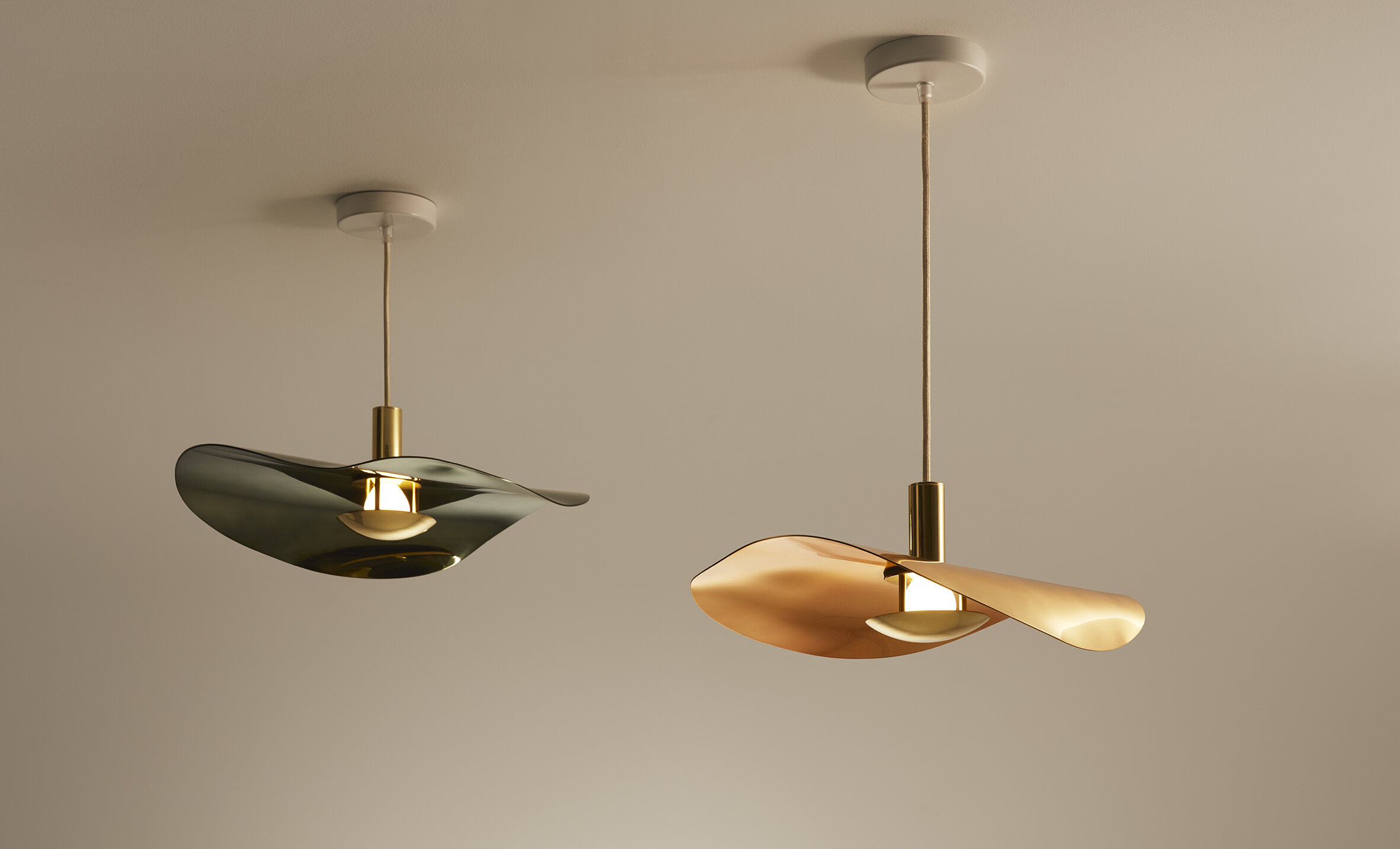
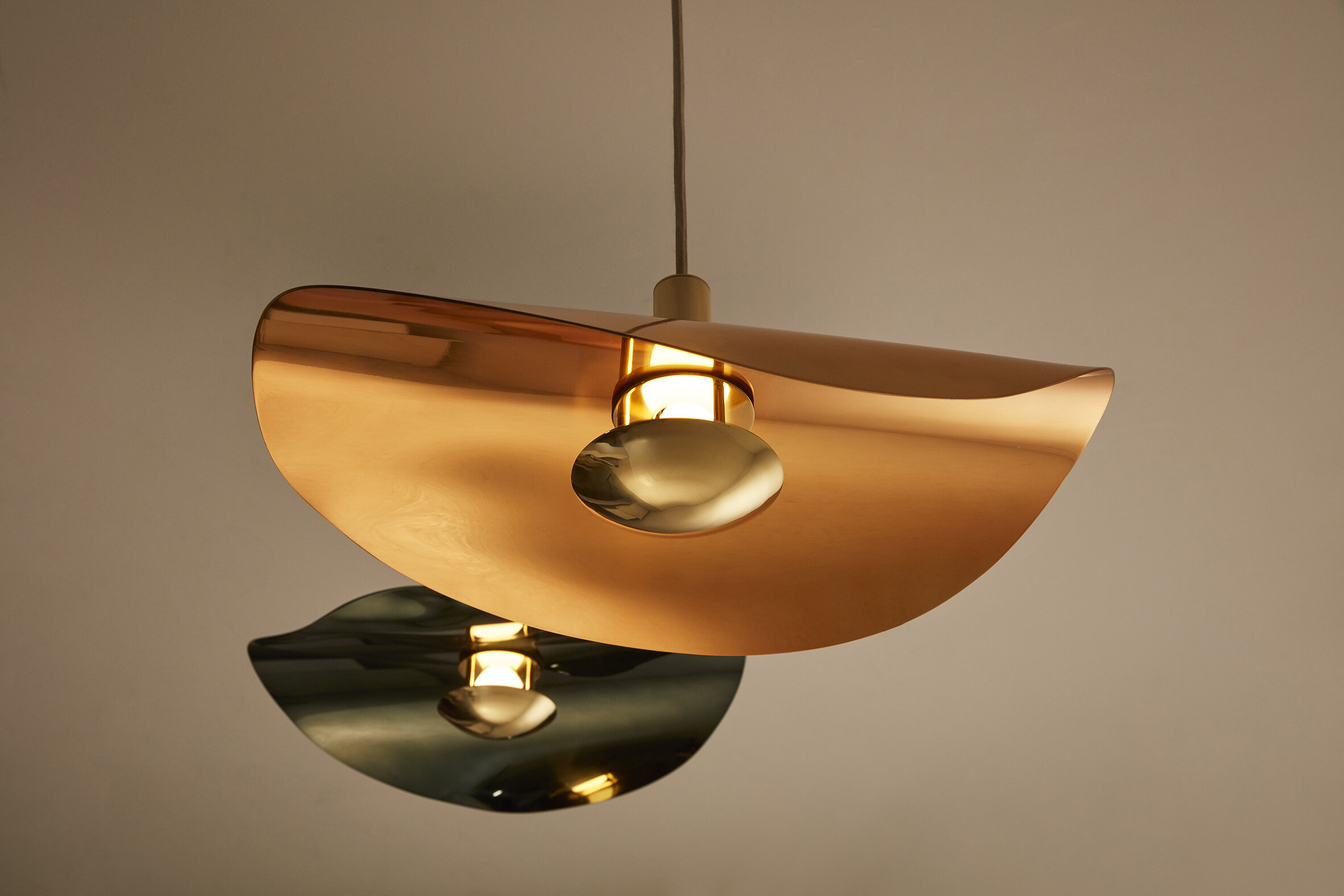
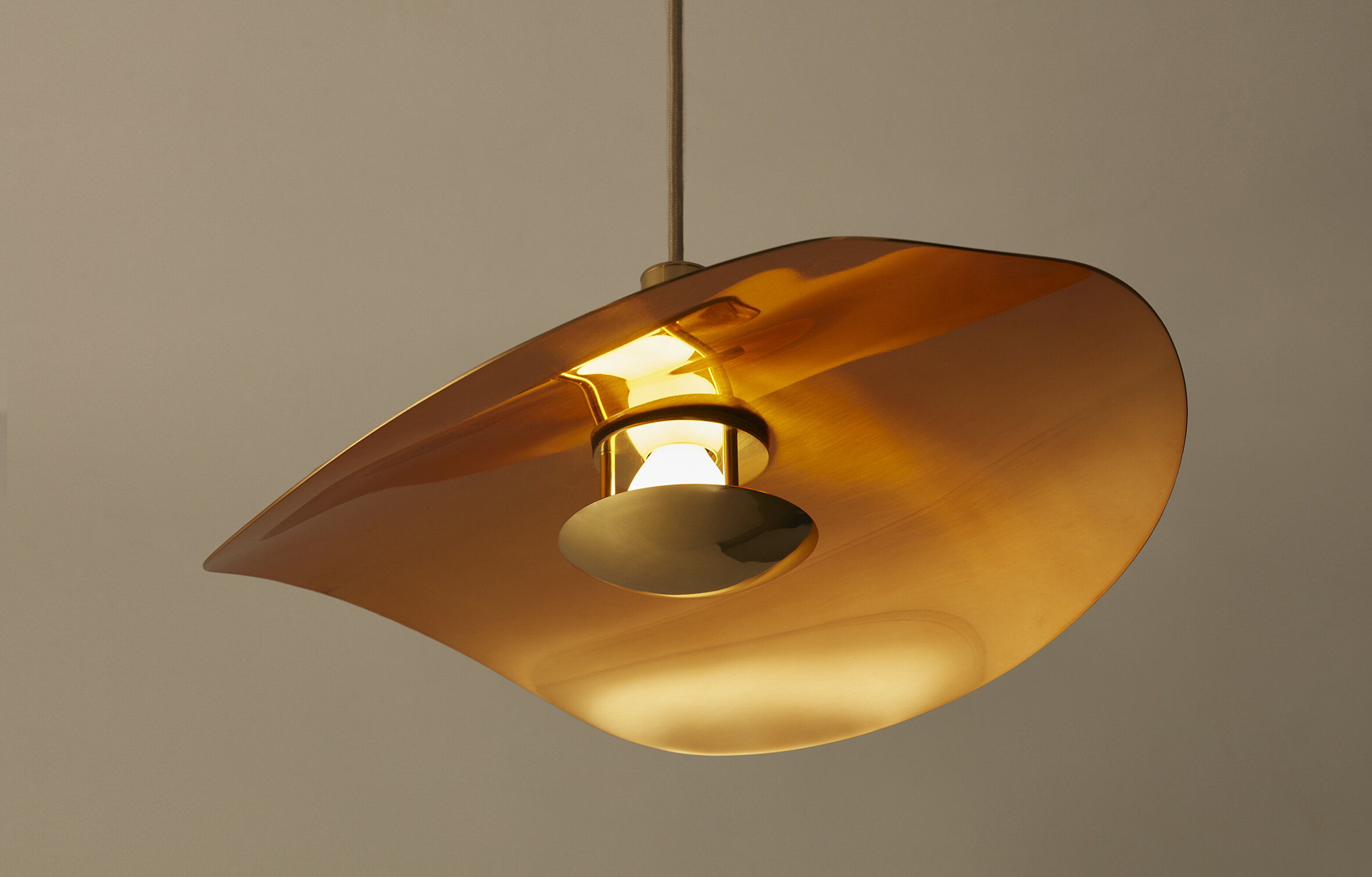
To create the whimsical curves on the Loïe suspension, the metal is continuously heated with a bright flame to allow it to be randomly sculpted until a perfect and unique supernova shape is achieved.
This technique has become typical of the studio’s collections. It was a process first used for the Mercure light, and after thorough research and development, it was extended and adapted to several other creations, allowing greater freedom in the design and conception phase.
Available in green and copper, the colour varnish has been chosen to harmonize and enhance the natural property of the underlying brass.
The Loïe suspension combines the design ethos and creative methods of MYDRIAZ, giving birth to an exceptional piece that radiates and brings warmth to a room.
The high-street collection will soon welcome new pieces, competing in innovation and ingenuity in the work and association of materials. They will be distributed across emblematic stores worldwide.
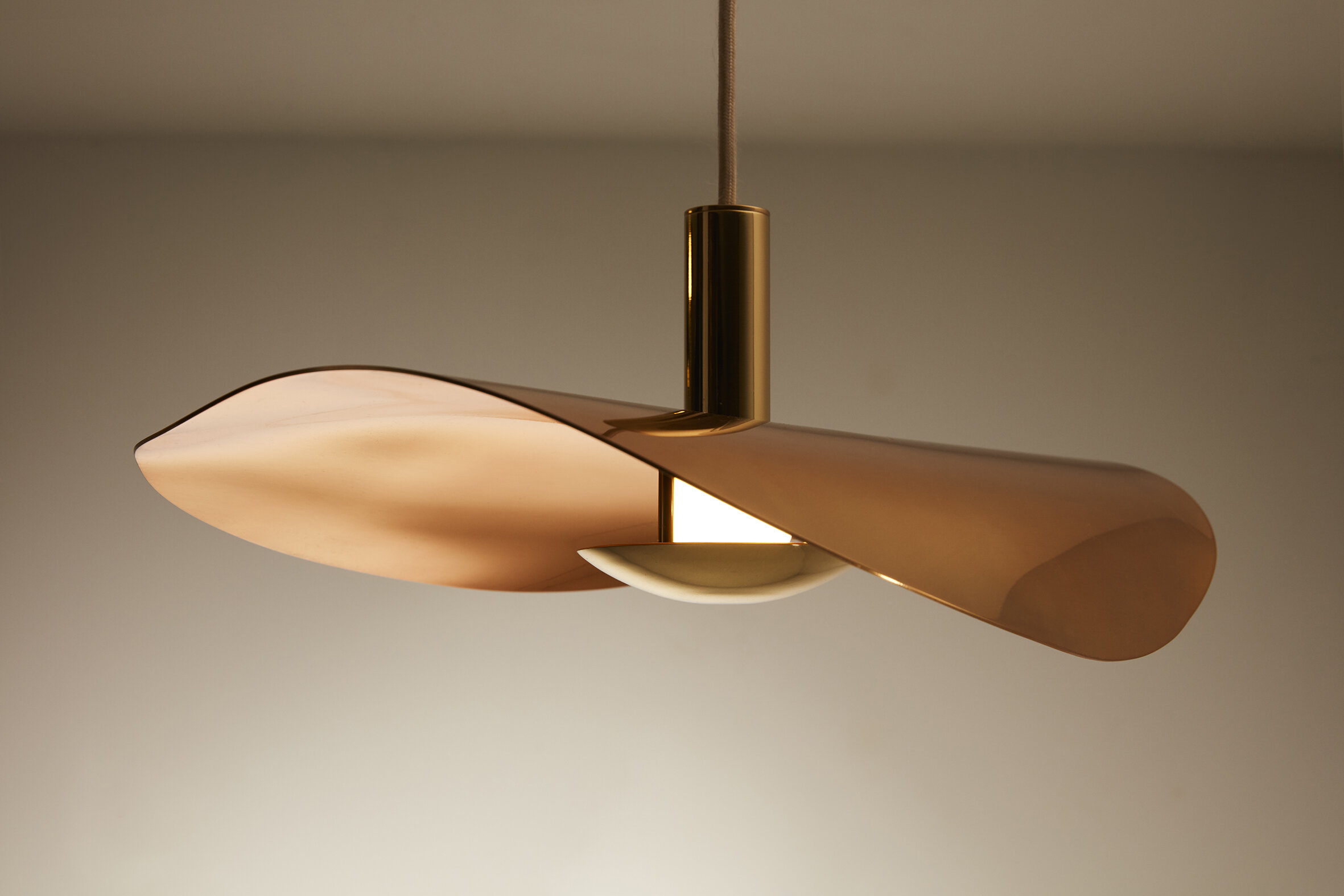
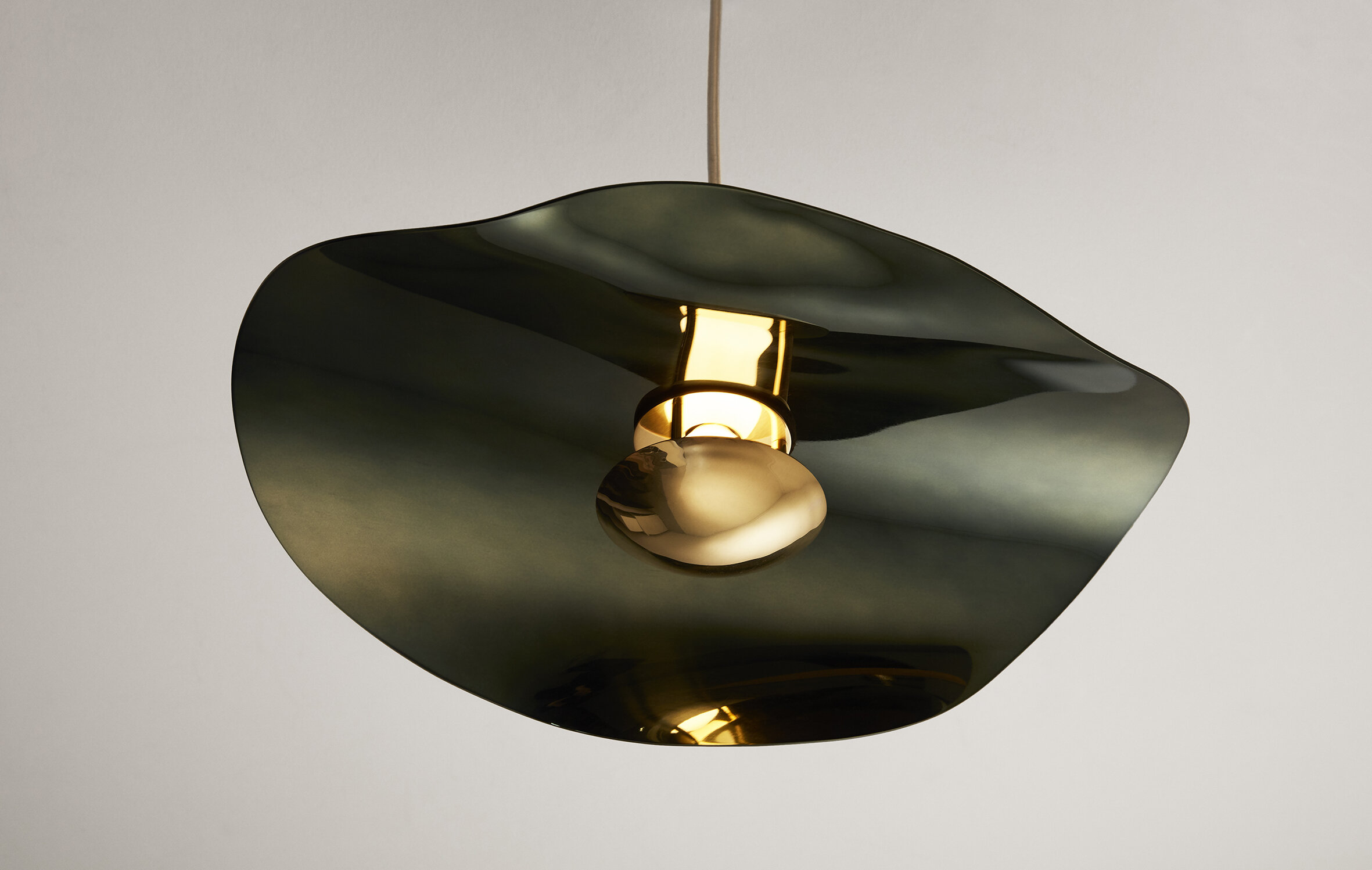
Specifications :
Made in small quantities by hand
in Mydriaz’s Parisian workshop
42 x 32 x 15 cm
Brass and coloured varnish
1350,00€ (excl. Tax)
For more information, please visit: www.mydriaz-paris.com
The Celebration of the heritage that narrates Parisian history by Neri & Hu, the Papi Restaurant
Nestled in the Grands Boulevards district of Paris' 9th arrondissement, Papi is the latest brainchild of up-and-coming restaurateur Etienne Ryckeboer his debut seafood bar Bulot Bulot. This time, he teams up with Neri&Hu to rehaul the façade and interior space, and with talented Japanese chef Akira Sugiura to serve a seasonal menu of modern Italian dishes.
Located on the ground floor of a typical late 19th century Haussmann building, Neri&Hu's design concept celebrates the layered material heritage that narrates Parisian history.
Nestled in the Grands Boulevards district of Paris' 9th arrondissement, Papi is the latest brainchild of up-and-coming restaurateur Etienne Ryckeboer his debut seafood bar Bulot Bulot. This time, he teams up with Neri&Hu to rehaul the façade and interior space, and with talented Japanese chef Akira Sugiura to serve a seasonal menu of modern Italian dishes.
Located on the ground floor of a typical late 19th century Haussmann building, Neri&Hu's design concept celebrates the layered material heritage that narrates Parisian history. During the dismantling phase, the existing site was treated carefully; by stripping back the strata of finishes built up through the decades, the raw materials' beauty is revealed. Every single element was meticulously examined, and the challenge was to resist the urge to fix every imperfection, instead, honour the imprint oft of time upon each surface. Within the interior, portions of the old limestone and brick walls, a raw steel column, and a brick column are preserved and integrated into the design. On the façade, an existing steel I-beam lintel is featured, while a segment of the old stone moulding by the entry is left exposed, stitching the façade seamlessly to the neighboring building. Each fragment neighbouring ants a different period in Paris' history, forming a beautiful yet imposing canvas for the architects to add their new strokes.
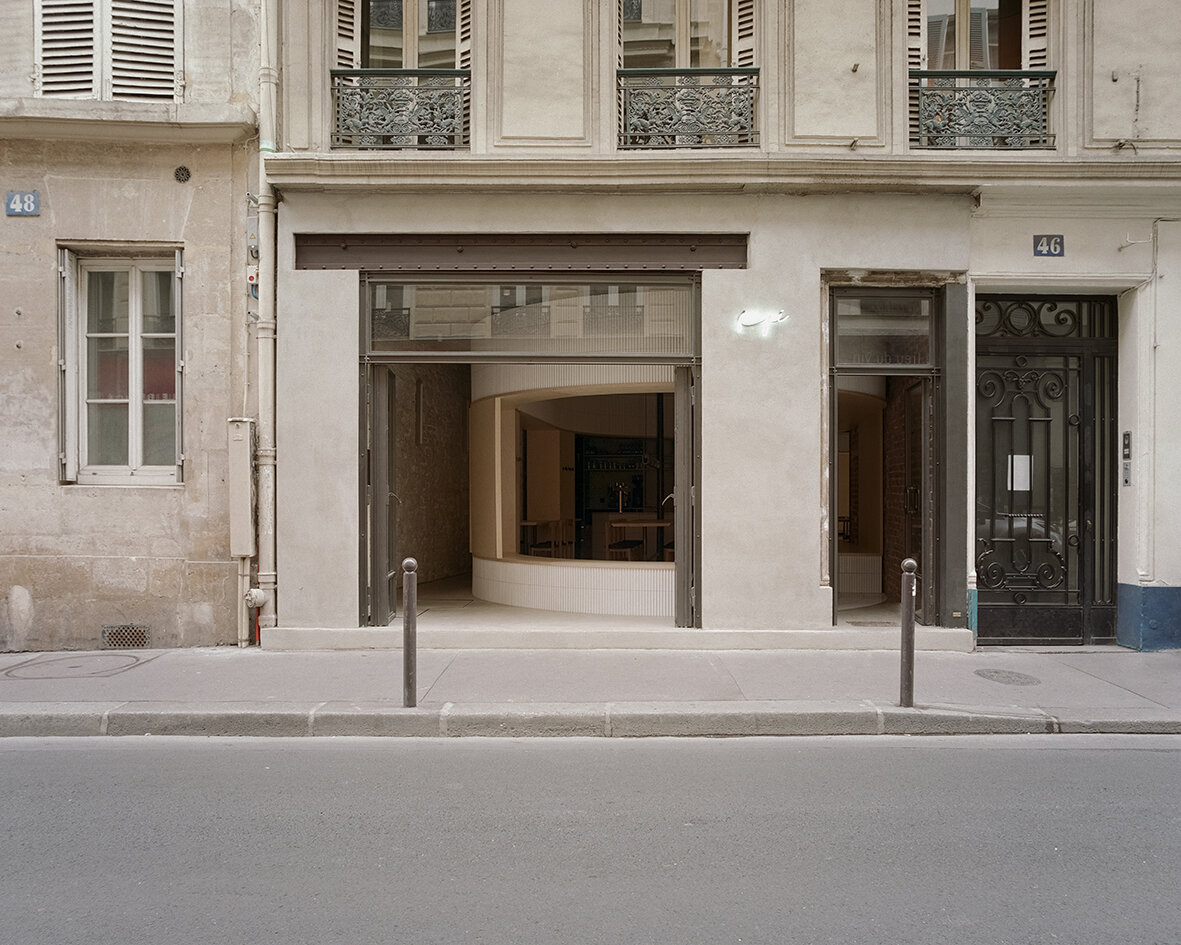
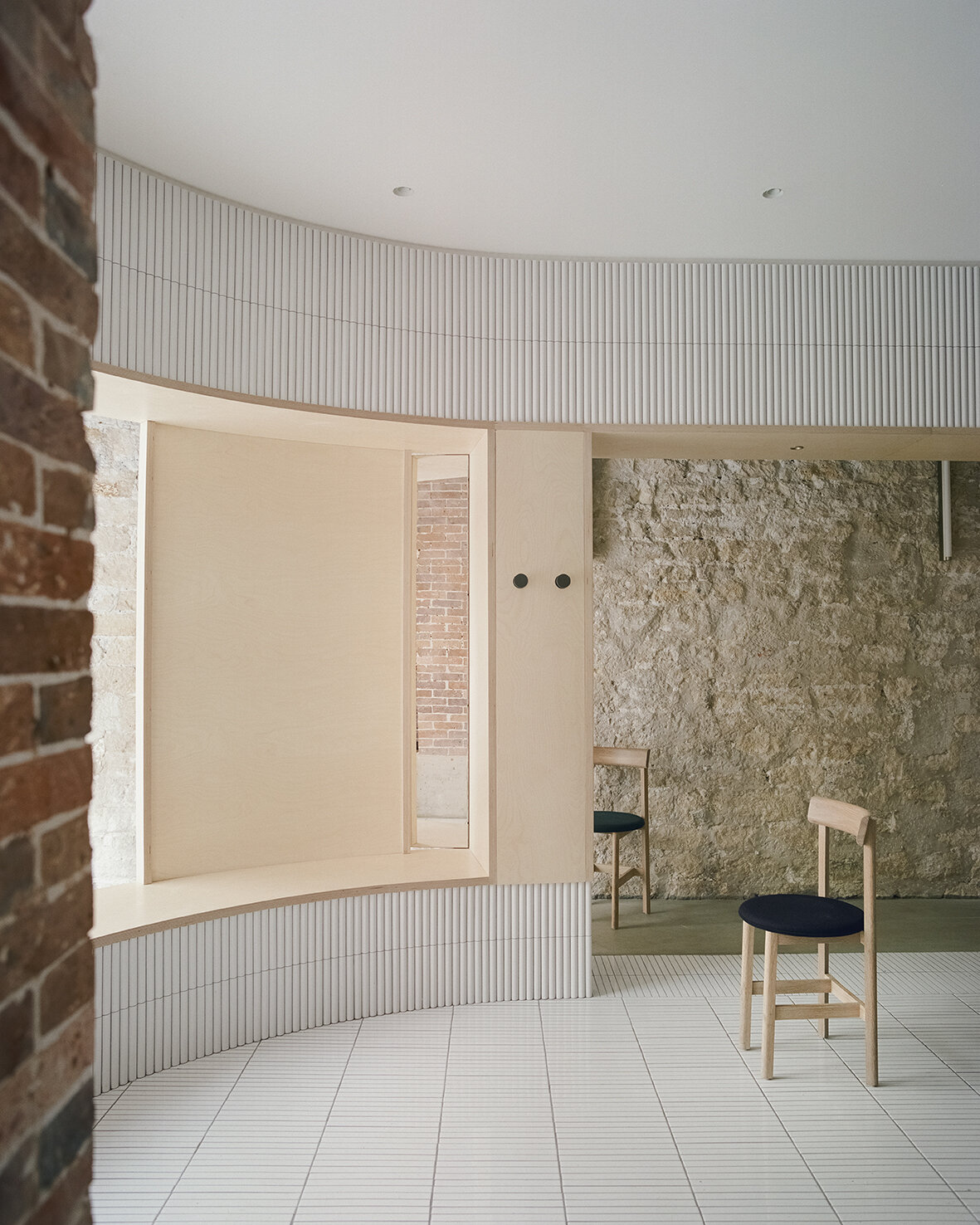
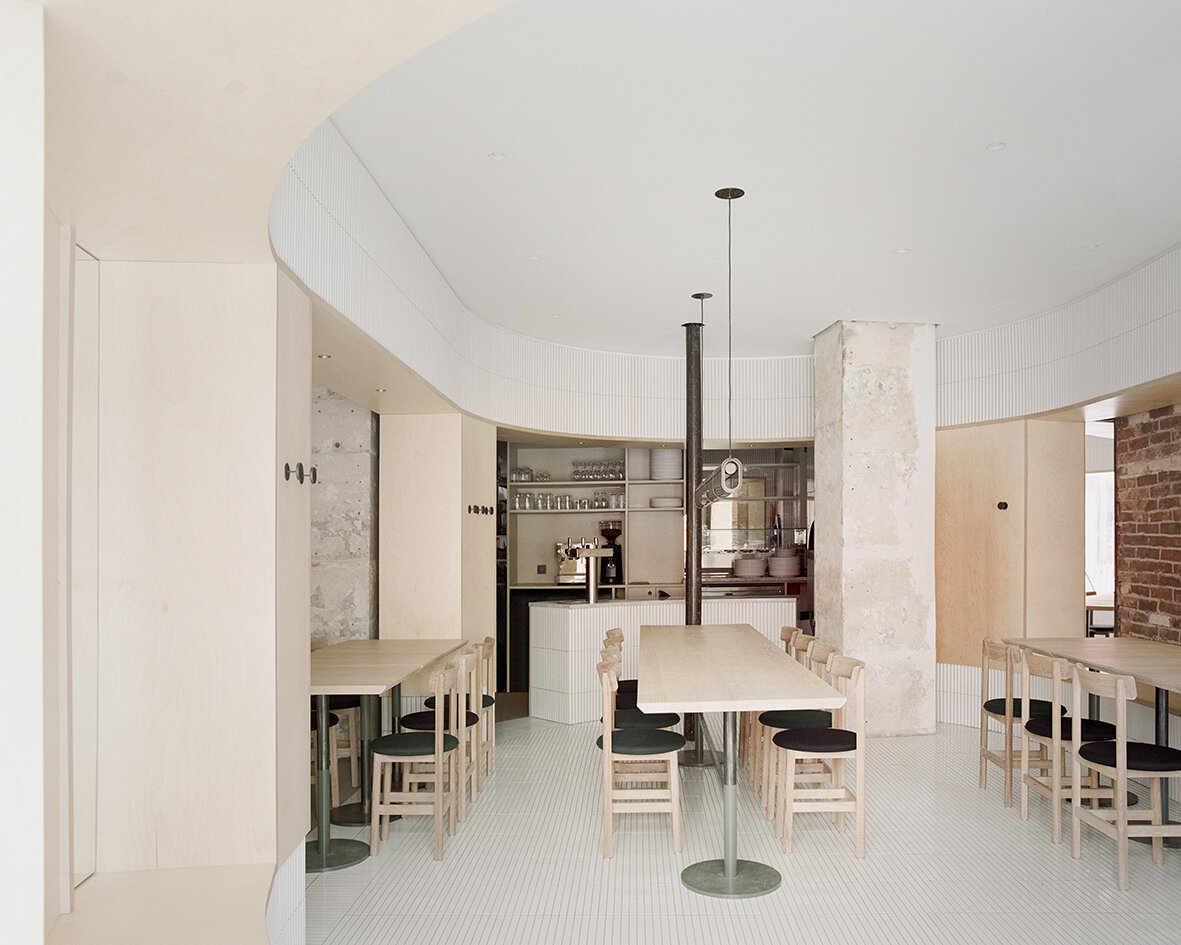
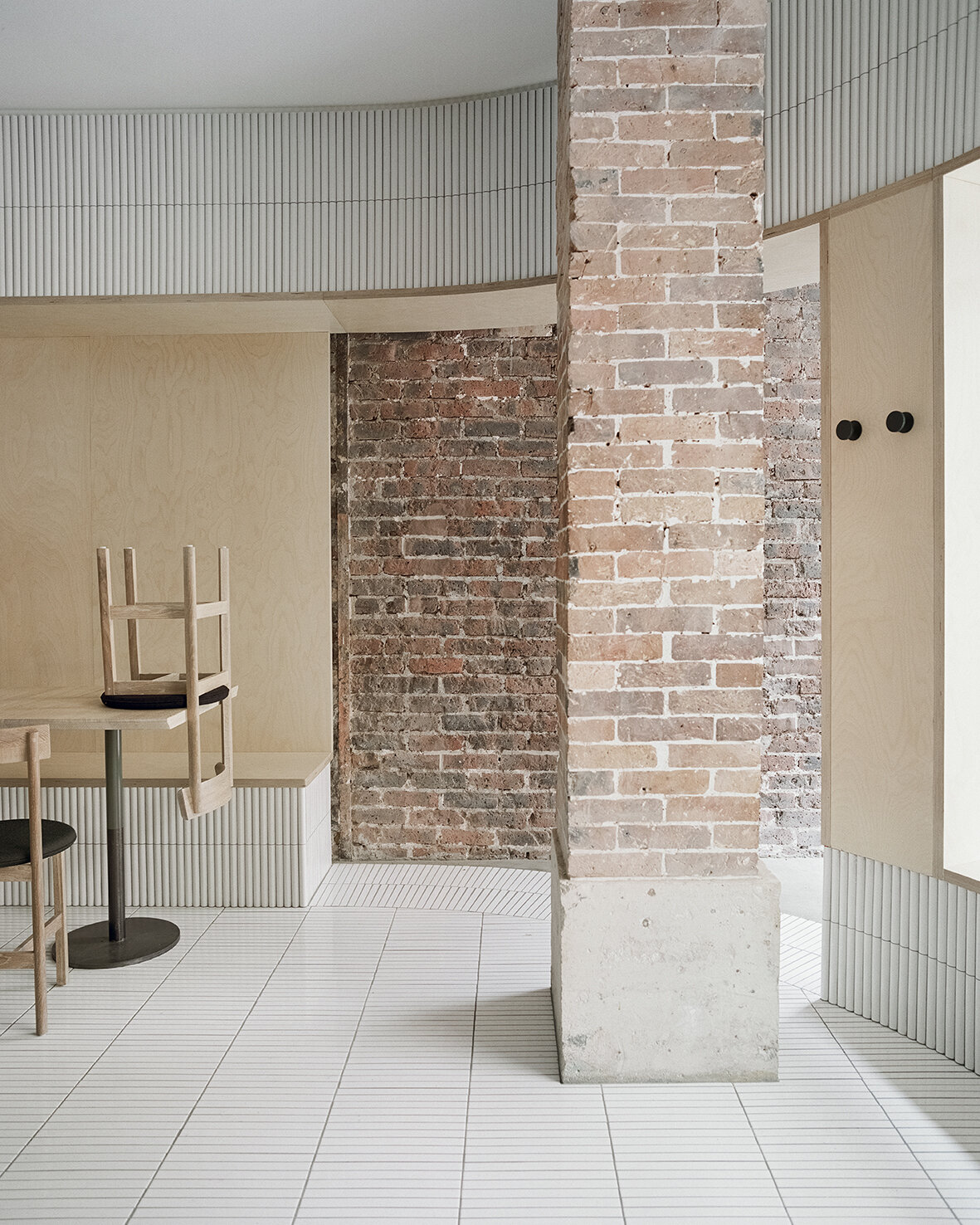

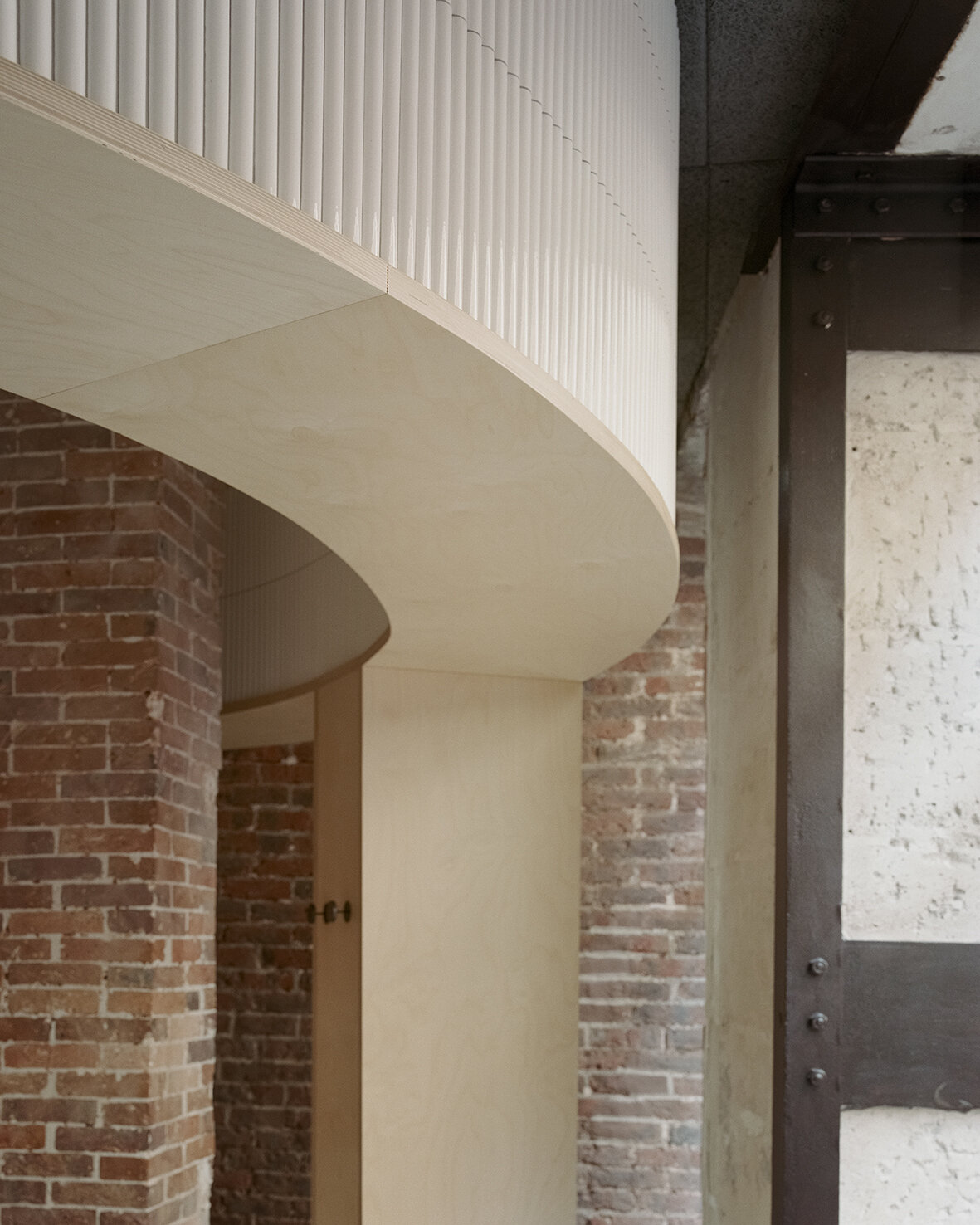
The new raw-steel-framed fully-operable glass façade maintains a visual continuity between the street and the venue and effectively extends the public realm into the interior. As guests enter the space through the main door, they see the clash of juxtaposing old and new materials, telling a story of sophistication with fresh textures of tile, glass and wood. Mirrors are placed strategically to create dynamic perspectives and voyeuristic moments between interior and exterior while inviting guests into cross gazes. The spatial and material strategies deployed to create a layered reading against the historical backdrop, offering guests a variety of experiences to explore within the space - moments of both public introversion and private extroversion.
Despite the compact 52 square meters of usable area, Neri&Hu’s asserts two figures into space: an oblong volume forming an arena-like enclosure that integrates all the functional needs of seating, display, chef’s preparation counter, privacy screen, as well as a round shape containing the wood-burning oven. Clad in handmade convex-curved white ceramic tiles, the enclosure features large openings framed with thick birch plywood that become seating benches for guests. Entering the arena, where the floor is adorned with narrow white ceramic tiles, guests are instantly transformed from spectators to performers on stage. The central communal table features a long custom pendant light above, while a series of lights by Viabizzuno create a stark modern contrast on the old limestone wall. Custom wood and fabric chairs, manufactured by De La Espada, are designed by Neri&Hu specifically for Papi Restaurant to fit within the limited footprint.
